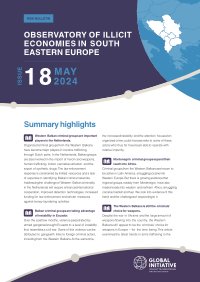Bennett, Phil; Cucos, Radu; Winch, Ryan
From the document: "The intersection of AI and transnational crime, particularly its application in human trafficking, represents an emerging and critically important area of study. This brief has been developed with a clear objective: to equip policymakers, law enforcement agencies, and the technology sector with the insights needed to anticipate and pre-emptively address the potential implications of AI on trafficking in persons. While we respond to the early instances of the use of AI by transnational criminal organisations, such as within Southeast Asia's cyber-scam centres, a more systemic approach is required. The potential for transnational criminal organisations to significantly expand their operations using AI technologies is considerable, and with it comes the risk of exponentially increasing harm to individuals and communities worldwide. It is imperative that we act now, before the most severe impacts of AI-enabled trafficking are realised. We have a unique time-limited opportunity--and indeed, a responsibility--to plan, train, and develop policies that can mitigate these emerging threats. This report aims to concretise this discussion by outlining specific scenarios where AI and trafficking could intersect, and to initiate a dialogue on how we can prepare and respond effectively. This document is not intended to be definitive, but rather to serve as a foundation for a broader, ongoing discussion. The ideas presented here are initial steps, and it will require innovative thinking, adequate resourcing, and sustained engagement from all sectors to build upon them effectively."
Organization For Security And Co-Operation In Europe. Office Of The Special Representative And Co-Ordinator For Combating Trafficking In Human Beings; Bali Process (Forum). Regional Support Office .NOV, 2024










